10 Sources for Competitive Data to Enhance Market Insights

10 Sources for Competitive Data to Enhance Market Insights
Overview
The article highlights ten essential sources of competitive data that can significantly enhance market insights for organizations. It underscores the necessity of accessing a variety of datasets, ranging from social media sentiment analysis to comprehensive industry reports. These resources are crucial for informing strategic decision-making and maintaining a competitive edge in a rapidly evolving market landscape. By leveraging such data, businesses are empowered to adapt effectively to shifting consumer trends and industry dynamics.
How can these datasets transform your approach to market analysis? The insights derived from these sources not only inform decisions but also foster a deeper understanding of the market environment.
Introduction
In an increasingly data-driven world, accessing and analyzing competitive data has become paramount for organizations seeking a strategic edge. This article explores ten invaluable sources that provide rich datasets and insights. These resources empower businesses to enhance their market understanding and improve decision-making processes. However, with a plethora of information available, how can companies effectively navigate this landscape to identify the most relevant data for their unique needs? By understanding the features, advantages, and benefits of these datasets, organizations can make informed choices that align with their strategic goals.
Initial Data Offering: Access Diverse Datasets for Market Insights
The Initial Data Offering (IDO) serves as a centralized hub for discovering and launching new datasets, emphasizing quality and uniqueness. By curating competitive data from various sectors such as finance, social media, and environmental studies, IDO empowers enterprises and researchers to make informed decisions based on comprehensive insights. This platform not only facilitates easy browsing and submission of datasets but also cultivates a dynamic marketplace that evolves with the latest trends and insights.
As the global large-scale analytics market is projected to grow from $307.52 billion in 2023 to $924.39 billion by 2032, the demand for high-quality datasets and competitive data becomes increasingly critical for organizations aiming to leverage information for strategic advantages. Industry leaders assert that access to high-quality competitive data is essential for effective decision-making, underscoring the crucial role that platforms like IDO play in enhancing accessibility and usability for enterprises in 2025 and beyond.
How can organizations harness the power of IDO to drive their strategic initiatives? By utilizing the unique datasets and competitive data available, they can gain valuable insights that inform their operations and enhance their competitive edge. The ability to access curated, high-quality datasets not only supports informed decision-making but also fosters innovation across various sectors.
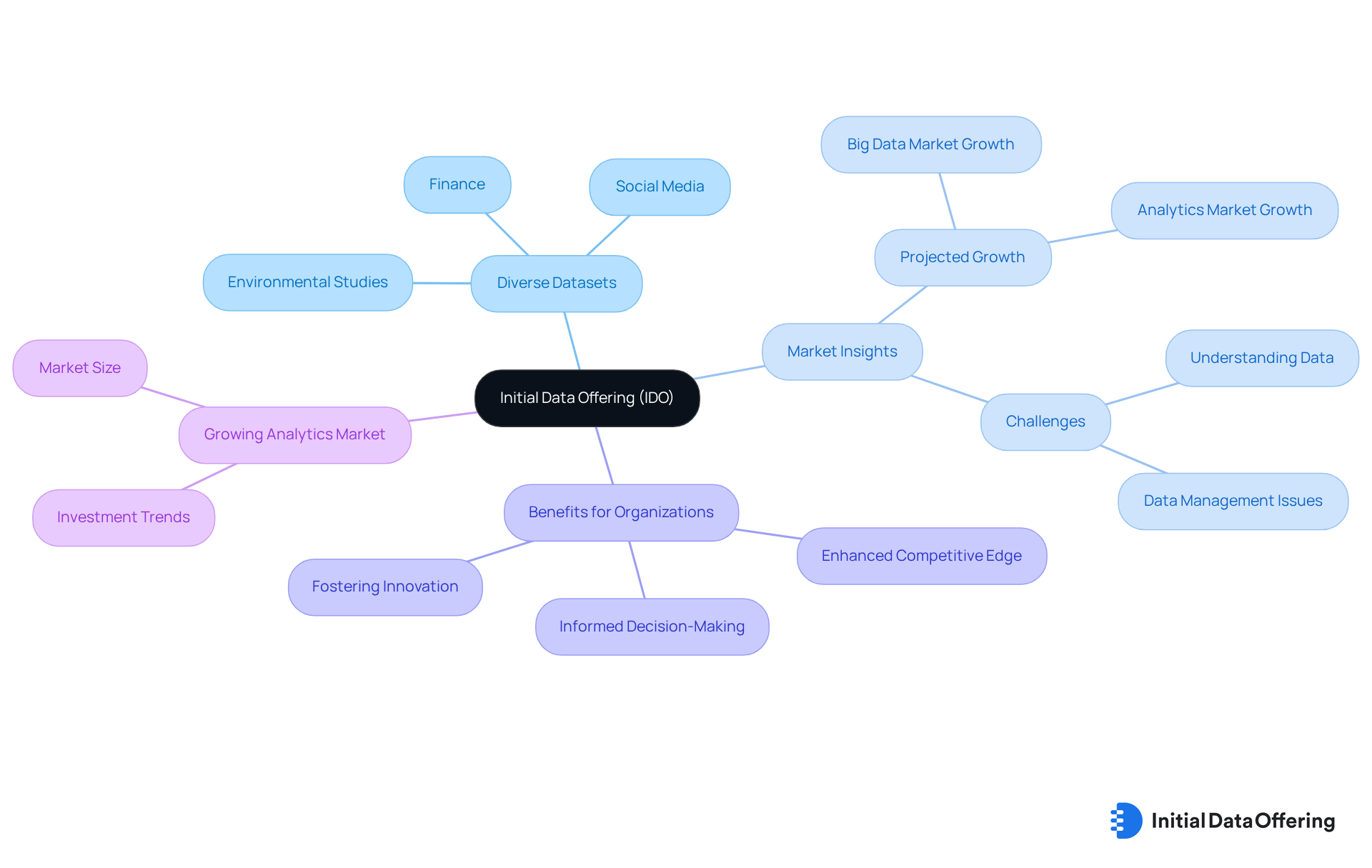
TikTok Consumer Sentiment Data: Analyze Social Media Trends
TikTok Consumer Sentiment Data provides essential insights into user perceptions of brands and products on one of the fastest-growing social media platforms, which boasts over 1.58 billion monthly active users. This dataset enables companies to identify emerging trends in buyer preferences, allowing for the customization of marketing approaches.
For instance, sentiment analysis can uncover emotional responses to specific campaigns, which helps brands refine their messaging and enhance engagement with their target audience. As TikTok continues to influence buyer behavior in 2025, understanding sentiment will be crucial for brands aiming to connect genuinely with users.
Companies like Samsung have effectively utilized sentiment analysis to assess audience reactions, resulting in a 35% increase in brand favorability and a 15% increase in purchase intent. Moreover, with 54% of TikTok users engaging with brand content daily, leveraging TikTok sentiment insights will be vital for driving effective marketing strategies and fostering stronger connections with consumers.
Brands are encouraged to regularly monitor sentiment trends to adapt their strategies, ensuring they remain relevant in this dynamic landscape.
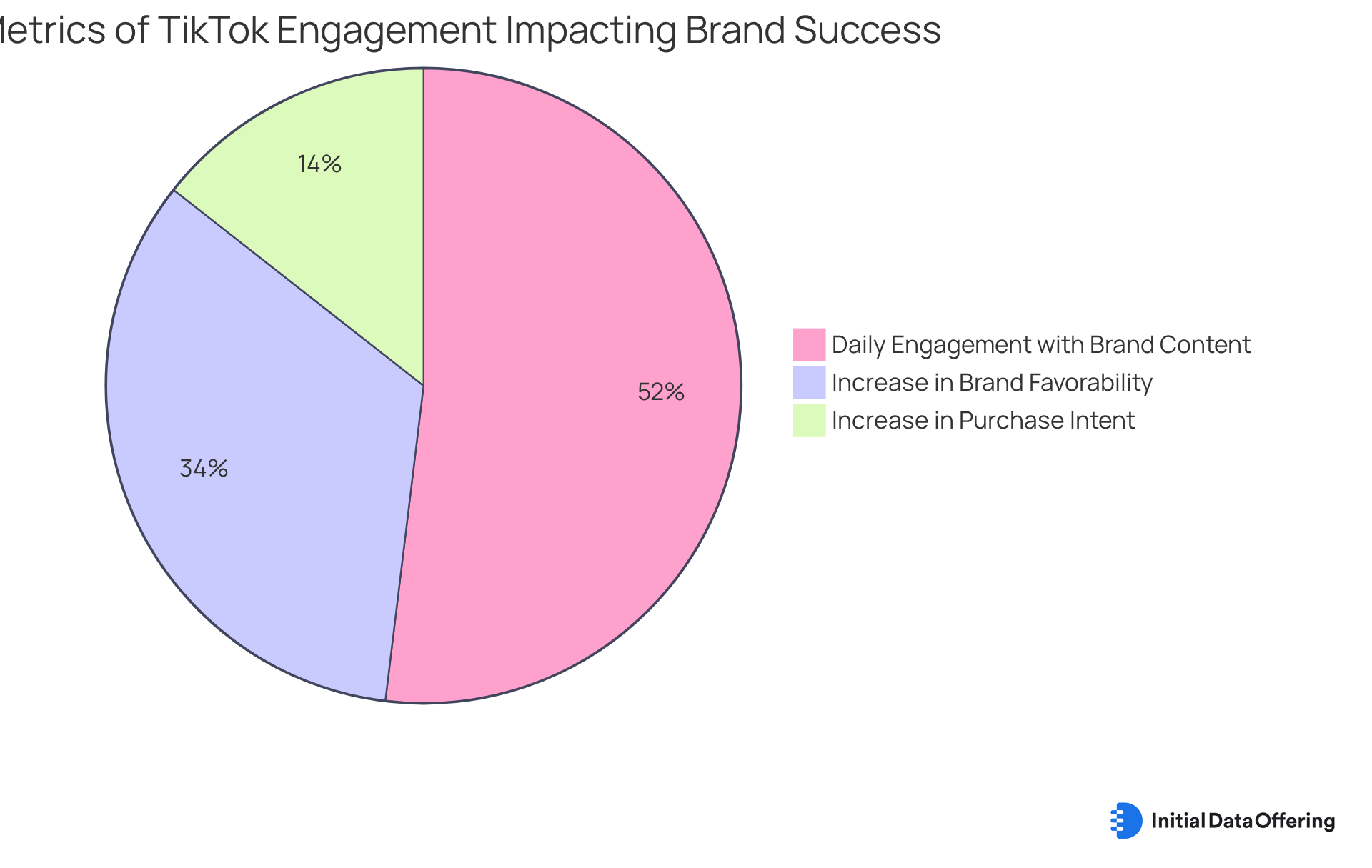
MarketPsych Sentiment Analytics: Gauge Market Emotions
MarketPsych Sentiment Analytics offers a comprehensive examination of emotions within the financial landscape by analyzing news, social media, and various data sources. This powerful tool enables companies to assess competitive data on public sentiment towards their brand and competitors, which facilitates more informed strategic decisions.
For instance, organizations such as [insert specific company examples here] have successfully utilized MarketPsych to track sentiment trends, allowing them to anticipate industry changes proactively and adjust their strategies accordingly, thereby enhancing their competitive advantage.
As Bill Gates aptly noted, 'Your most unhappy customers are your greatest source of learning,' underscoring the significance of understanding public sentiment. With consumer information emerging as a crucial differentiator, Eric McGee emphasizes, 'In the next two to three years, consumer data will be the most important differentiator.'
Consequently, leveraging such analytics becomes essential for enterprises aiming to remain ahead in a rapidly evolving environment. To effectively implement sentiment analysis, market research analysts should consistently monitor sentiment trends and integrate these insights into their strategic planning.
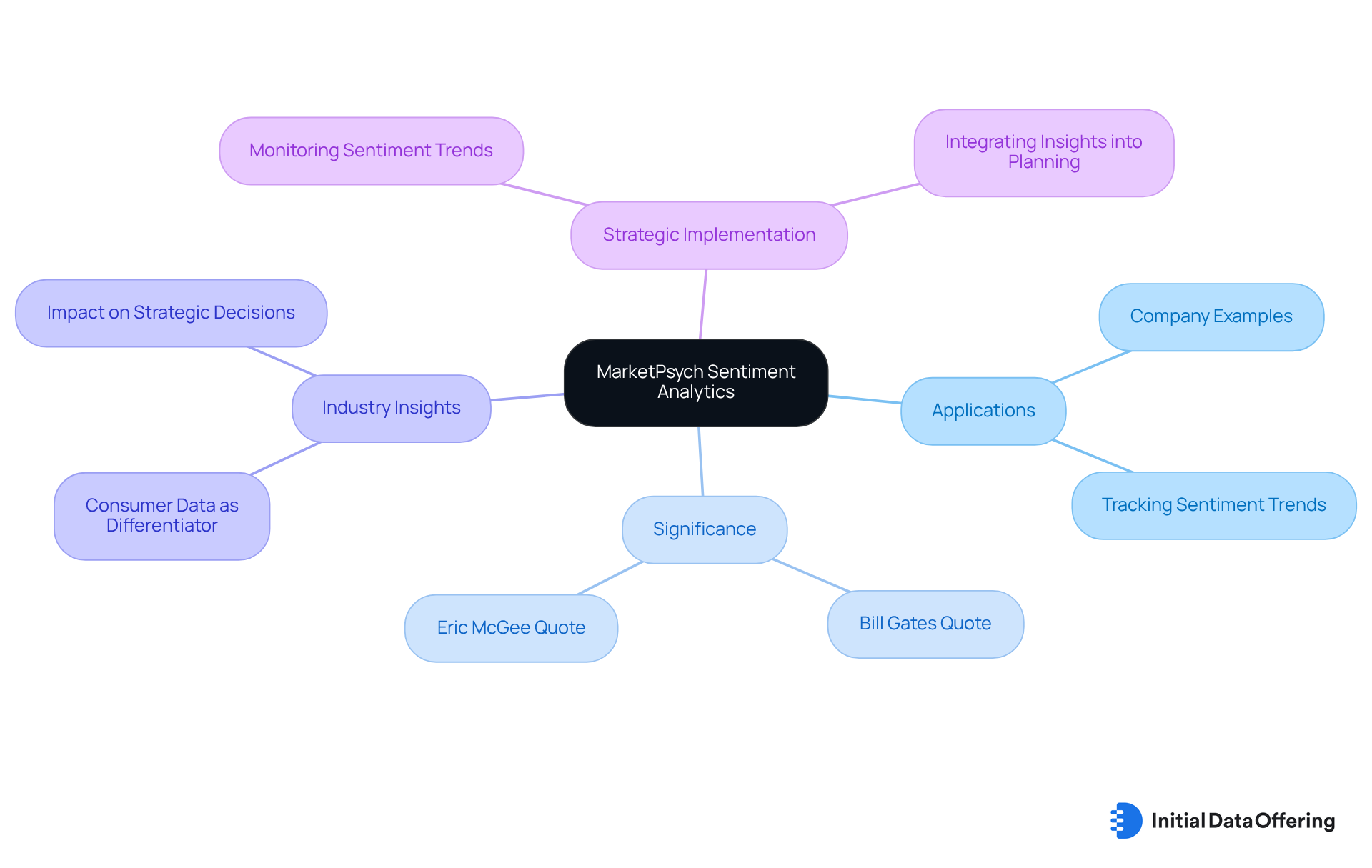
Corporate Carbon Footprint ESG Data: Assess Environmental Impact
Corporate Carbon Footprint ESG Data offers critical insights into the environmental impact of companies, particularly regarding their carbon emissions and sustainability practices. With the growing emphasis on sustainability, by 2025, 88% of buyers expressed a preference for businesses actively engaged in environmental initiatives. Additionally, 88% of individuals demonstrate increased loyalty to companies that support social or environmental causes, highlighting the importance of loyalty linked to ESG practices.
Evaluating their carbon footprint allows organizations to identify areas for improvement, showcasing their commitment to sustainability. This proactive strategy not only bolsters brand reputation but also cultivates customer loyalty, as consumers are increasingly inclined to support brands that resonate with their values.
Furthermore, companies that improve their ESG performance can experience a significant reduction in carbon emission intensity; for every 1% increase in ESG performance, carbon emission intensity can decrease by 26.6%. As sustainability evolves into a fundamental requirement for businesses, the importance of robust sustainability information cannot be overstated, serving as a vital resource for companies navigating the shifting commercial landscape.
To effectively leverage ESG information, businesses should contemplate establishing SMART objectives for their initiatives, thereby ensuring a systematic approach to sustainability.
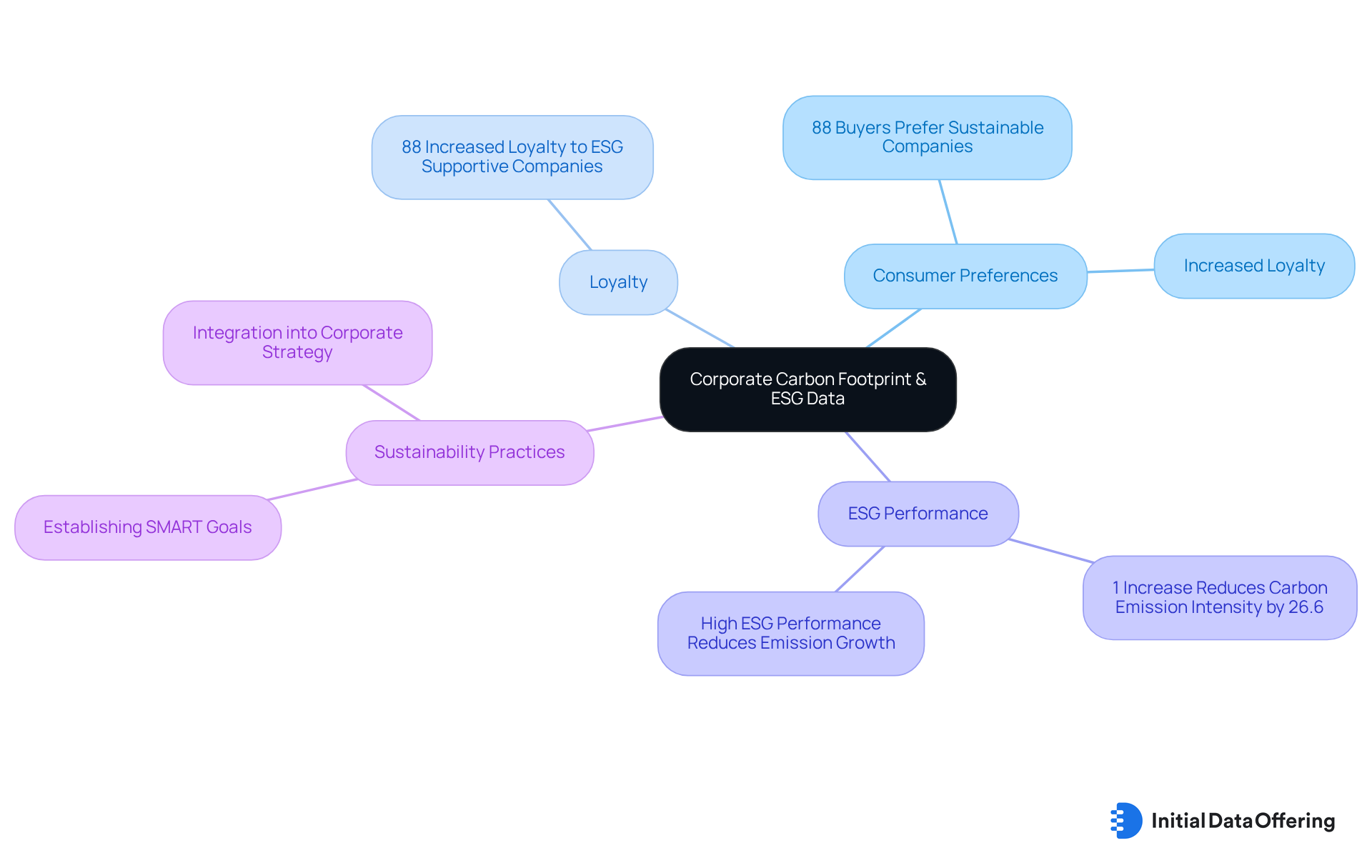
Statista: Comprehensive Statistics for Market Research
Statista distinguishes itself as a leading statistics platform, providing extensive access to data across multiple industries and sectors. Companies can access a wealth of statistics, survey results, and industry studies that are essential for thorough analysis of the industry. For instance, the global eCommerce sector is projected to reach US$4.32 trillion in 2025, with an annual growth rate of 8.02% anticipated from 2025 to 2029. Such insights enable companies to gauge market trends and consumer preferences effectively.
Market researchers emphasize the importance of leveraging competitive data from Statista to enhance competitive analysis. With more than 5.56 billion internet users and 5.24 billion social media users globally as of February 2025, comprehending these dynamics is crucial for organizations looking to enhance their strategies. Significantly, 93% of the population in high-income nations accessed the internet, in contrast to just 27% in low-income regions. This disparity highlights the differences in digital engagement, making this data invaluable for companies seeking to customize their marketing strategies according to regional internet usage trends.
Furthermore, Statista aids in understanding industry dynamics by offering essential indicators such as GDP, consumer expenditure, and internet penetration rates. By incorporating these statistics into their analyses, companies can make informed, data-driven decisions that enhance their competitive advantage through competitive data in the marketplace. Moreover, the challenge of data retention is underscored by the reality that only a minor fraction of newly generated data was preserved into 2021. This stresses the significance of efficient data management in research, prompting organizations to consider how they handle and utilize their data resources.
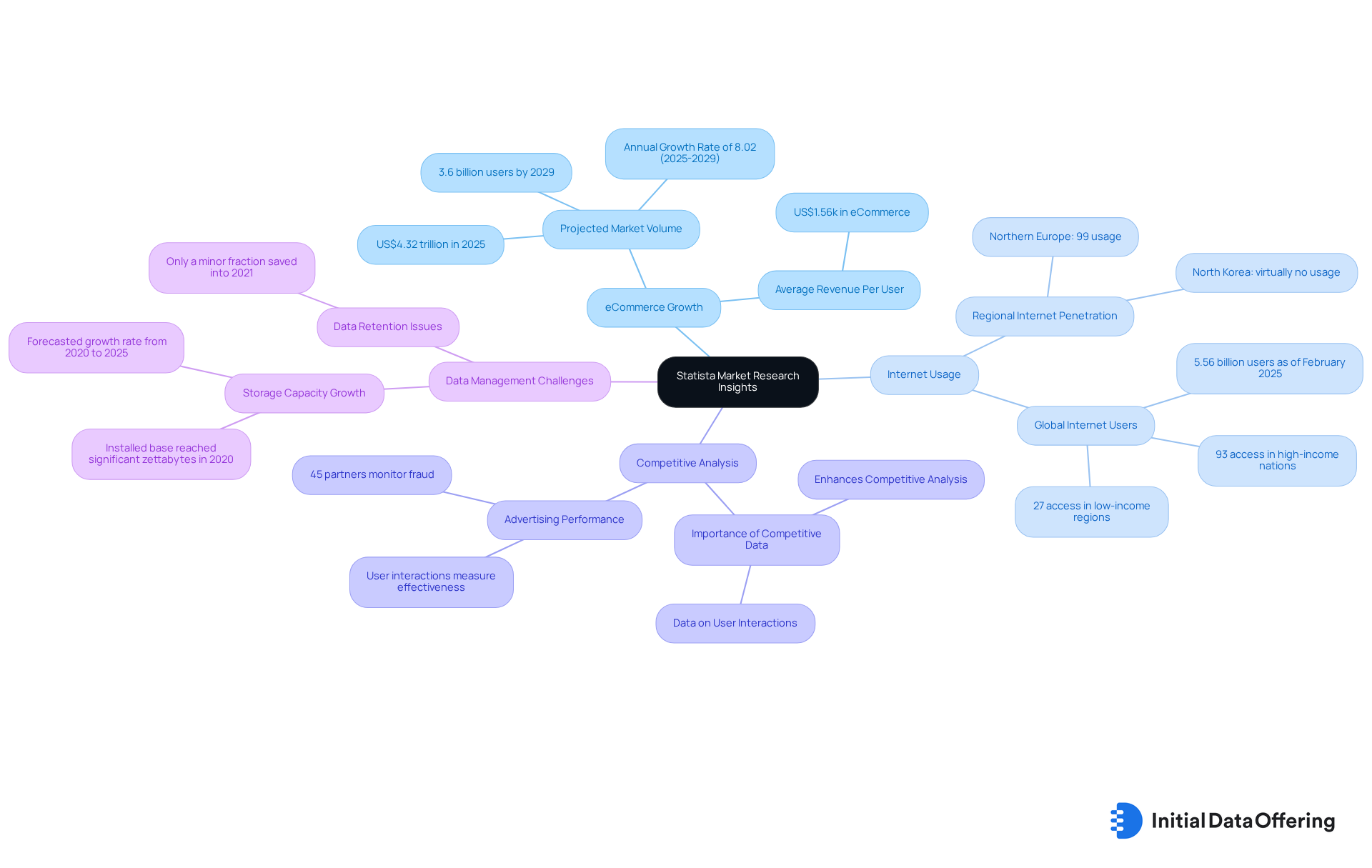
Nielsen: Consumer Insights and Market Analytics
Nielsen provides comprehensive insights into clients and competitive data, allowing organizations to effectively understand their target demographic. By analyzing purchasing behavior, media consumption, and demographic trends, Nielsen offers companies competitive data to tailor their marketing strategies to meet consumer needs. This capability not only enhances a company's positioning but also drives sales growth.
How can your organization leverage these insights to refine its approach? Understanding these dynamics is essential for businesses aiming to thrive in a landscape filled with competitive data.
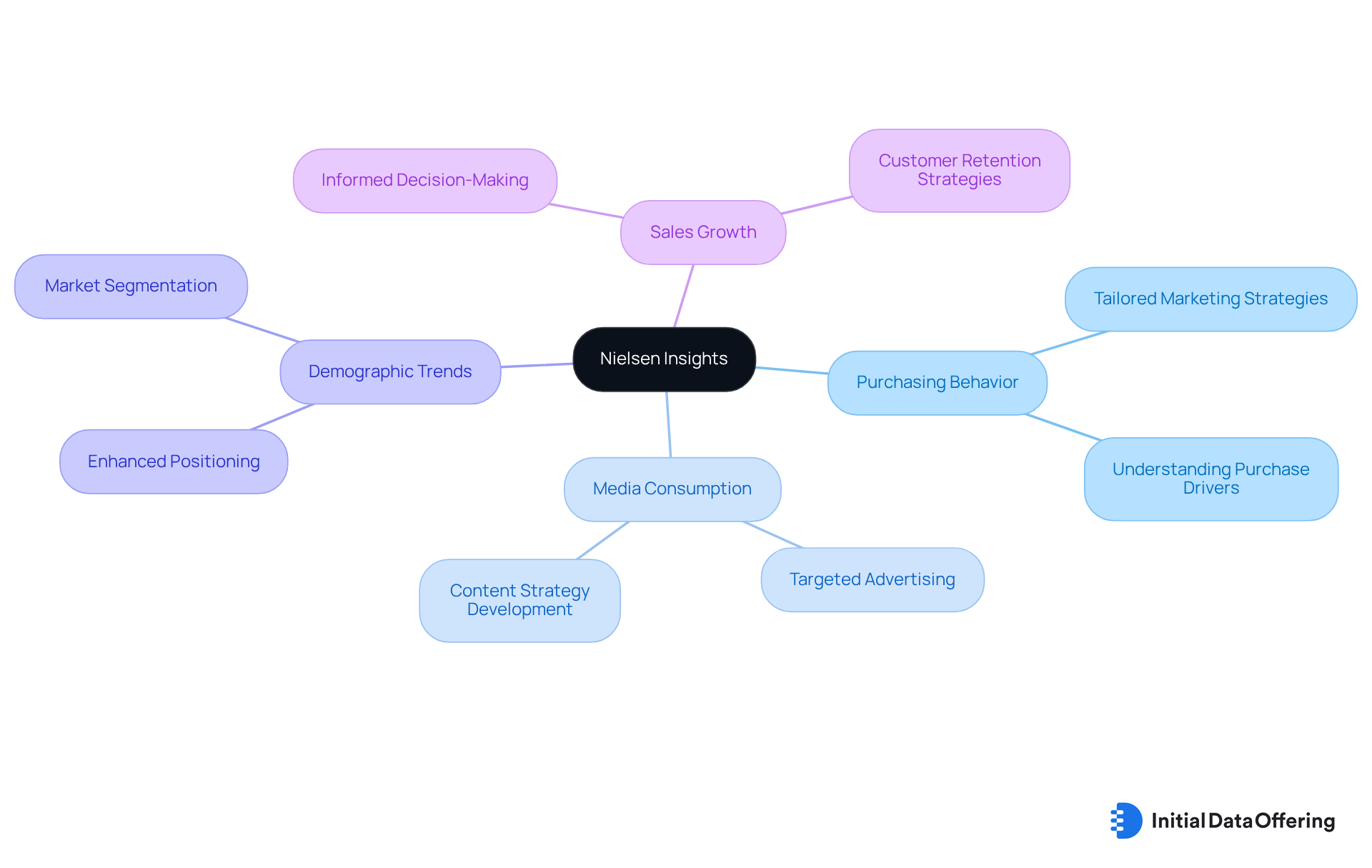
Gartner: Technology Trends and Competitive Analysis
Gartner provides extensive research on technology trends and competitive data, offering organizations critical insights into emerging technologies and market dynamics. By leveraging Gartner's reports, companies can identify opportunities for innovation and strategic growth. This information is particularly vital for organizations in rapidly changing sectors, where staying ahead of technological advancements is essential for success.
Notably, companies with robust remote work policies experience a 25% lower turnover rate, underscoring the importance of flexibility in retention strategies. Furthermore, 80% of employees report that regular recognition enhances their loyalty, further emphasizing the need to adapt to workforce requirements.
In the fast-paced landscape of 2025, leveraging Gartner's insights is crucial for enterprises aiming to maintain a competitive edge and drive informed decision-making.
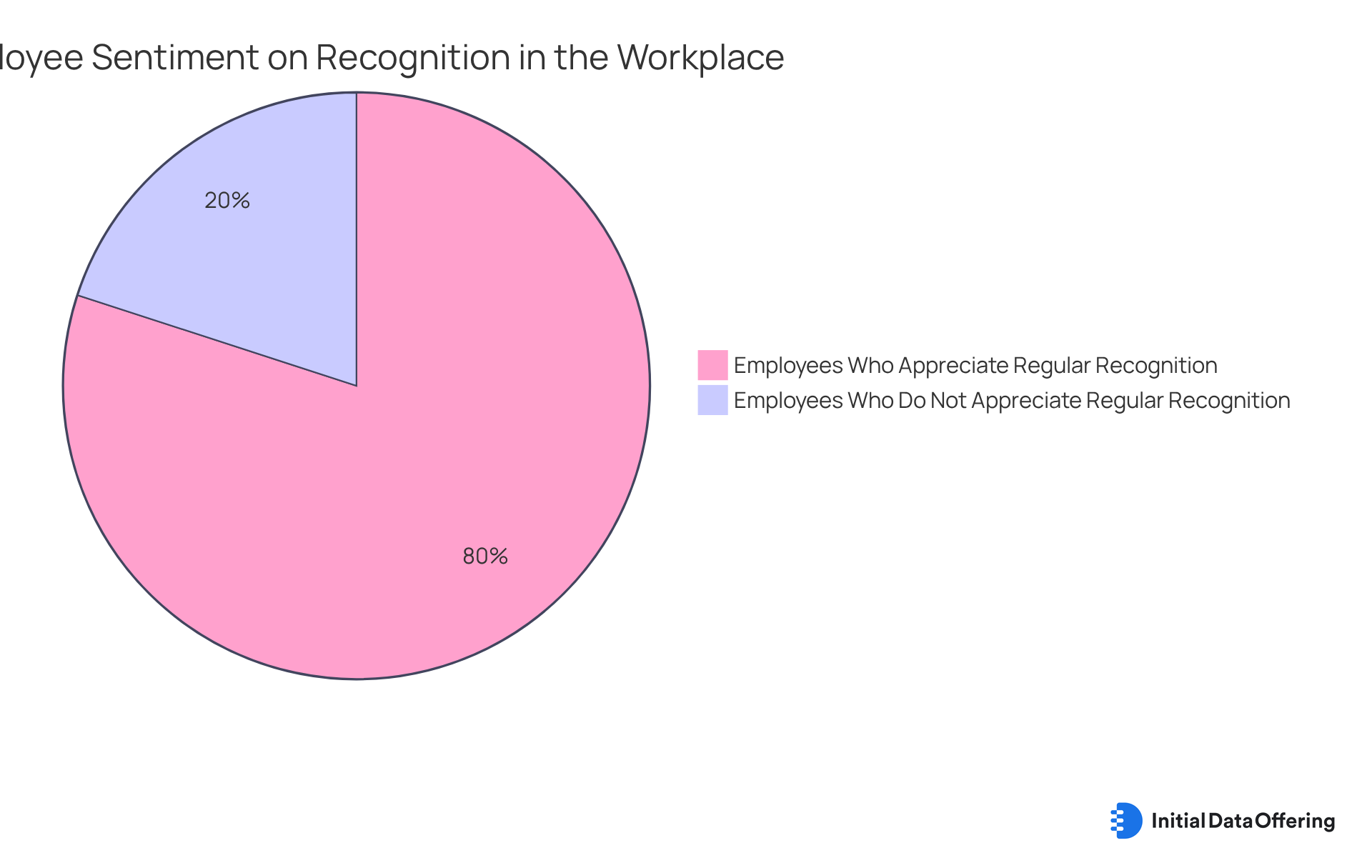
IBISWorld: Industry Reports for Strategic Insights
IBISWorld provides comprehensive industry reports across various sectors, offering essential insights into industry trends, competitive dynamics, and competitive data forecasts. These analyses are vital for strategic planning, as they provide competitive data that empower organizations to make informed decisions. By leveraging IBISWorld's resources, companies can uncover competitive data to identify growth opportunities and effectively manage risks within their industries.
Looking ahead to 2025, current trends indicate a shift towards sustainability and digital transformation, with businesses increasingly focusing on innovative solutions to enhance operational efficiency. Analysts from IBISWorld stress that grasping these trends is critical for sustaining a competitive advantage through competitive data.
For instance, firms that have adeptly identified growth opportunities through detailed industry analysis have reported significant improvements in positioning and profitability. Utilizing IBISWorld's insights not only helps in recognizing emerging trends but also equips businesses with the knowledge necessary to navigate the complexities of their respective industries.
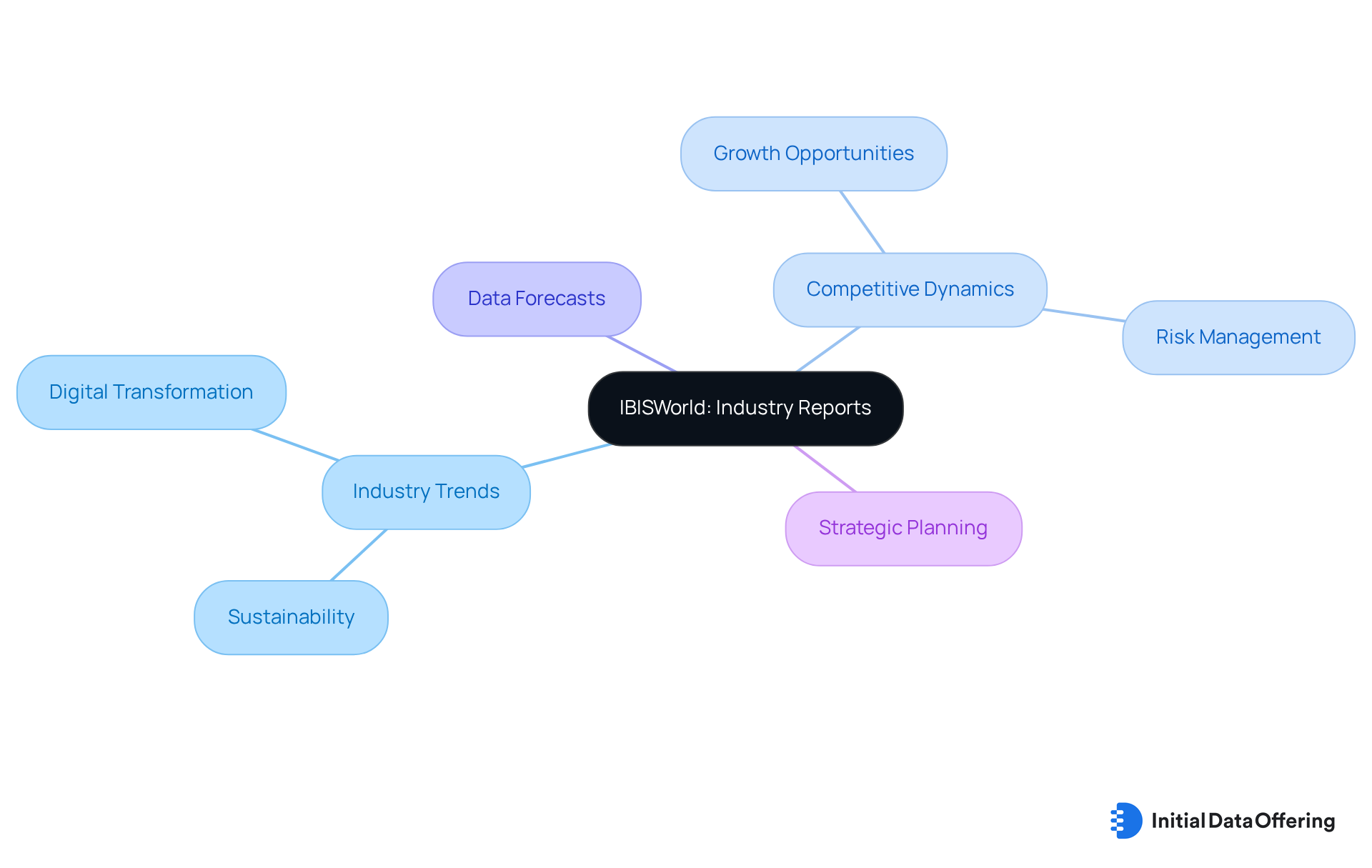
Euromonitor International: Global Market Research Data
Euromonitor International provides extensive worldwide research information, covering a variety of sectors and purchasing trends. Their reports deliver insights into industry dynamics, economic forecasts, and buyer behavior across different regions. By leveraging competitive data from Euromonitor, companies gain the advantage of making informed decisions regarding sector entry, product development, and strategic positioning in the global marketplace.
How can this data shape your business strategy? The actionable insights derived from these reports empower organizations to navigate the complexities of the market with confidence.
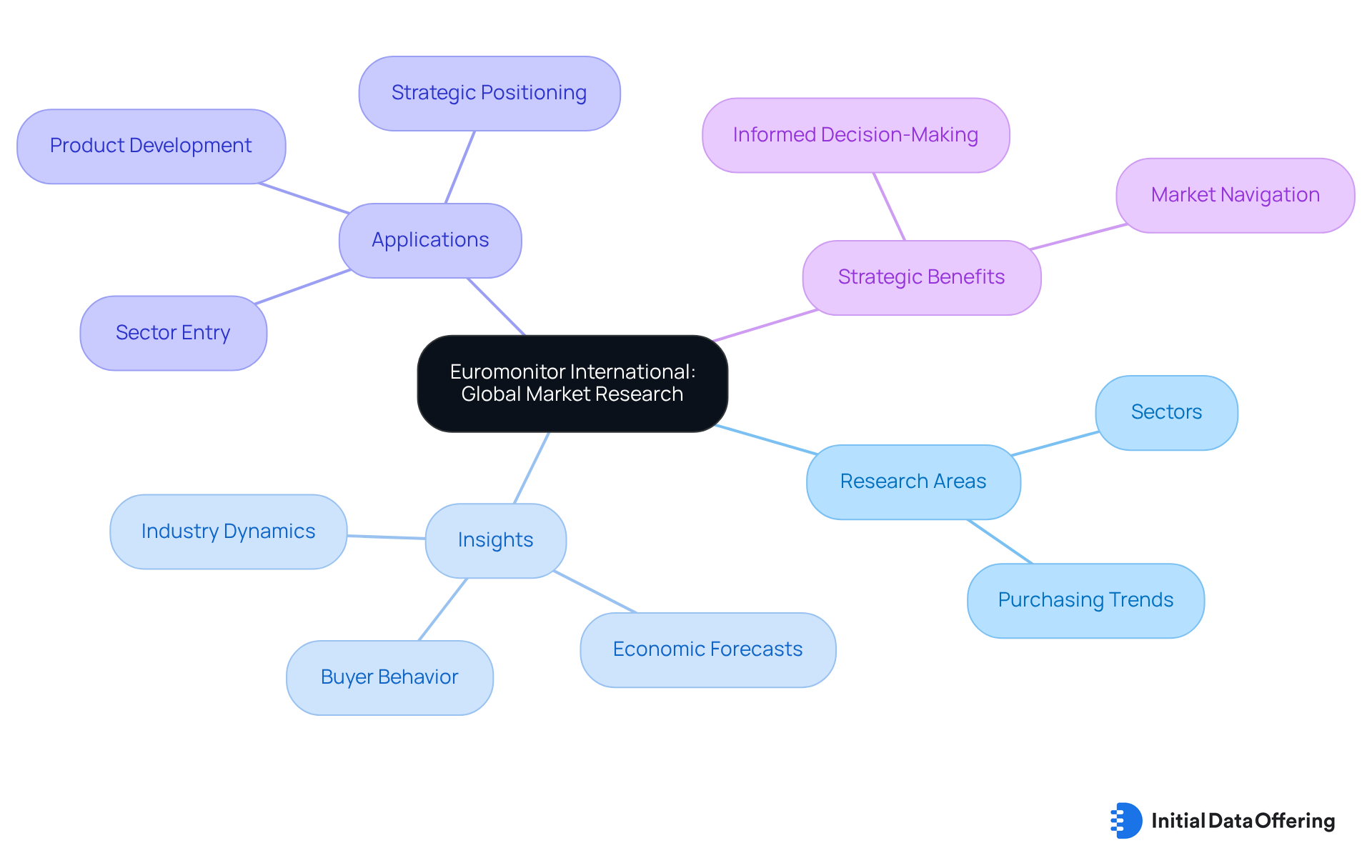
Mintel: Market Intelligence on Consumer Trends
Mintel offers valuable insights into trends, providing companies with essential information about the evolving preferences and behaviors of buyers. Their research spans various sectors, including food, beauty, and technology. This breadth of coverage enables businesses to tailor their products and marketing strategies effectively to meet changing consumer demands. By leveraging Mintel's insights and competitive data, companies can not only stay ahead of market trends but also enhance their competitive positioning.
How can your business utilize these insights to adapt and thrive in a dynamic marketplace?
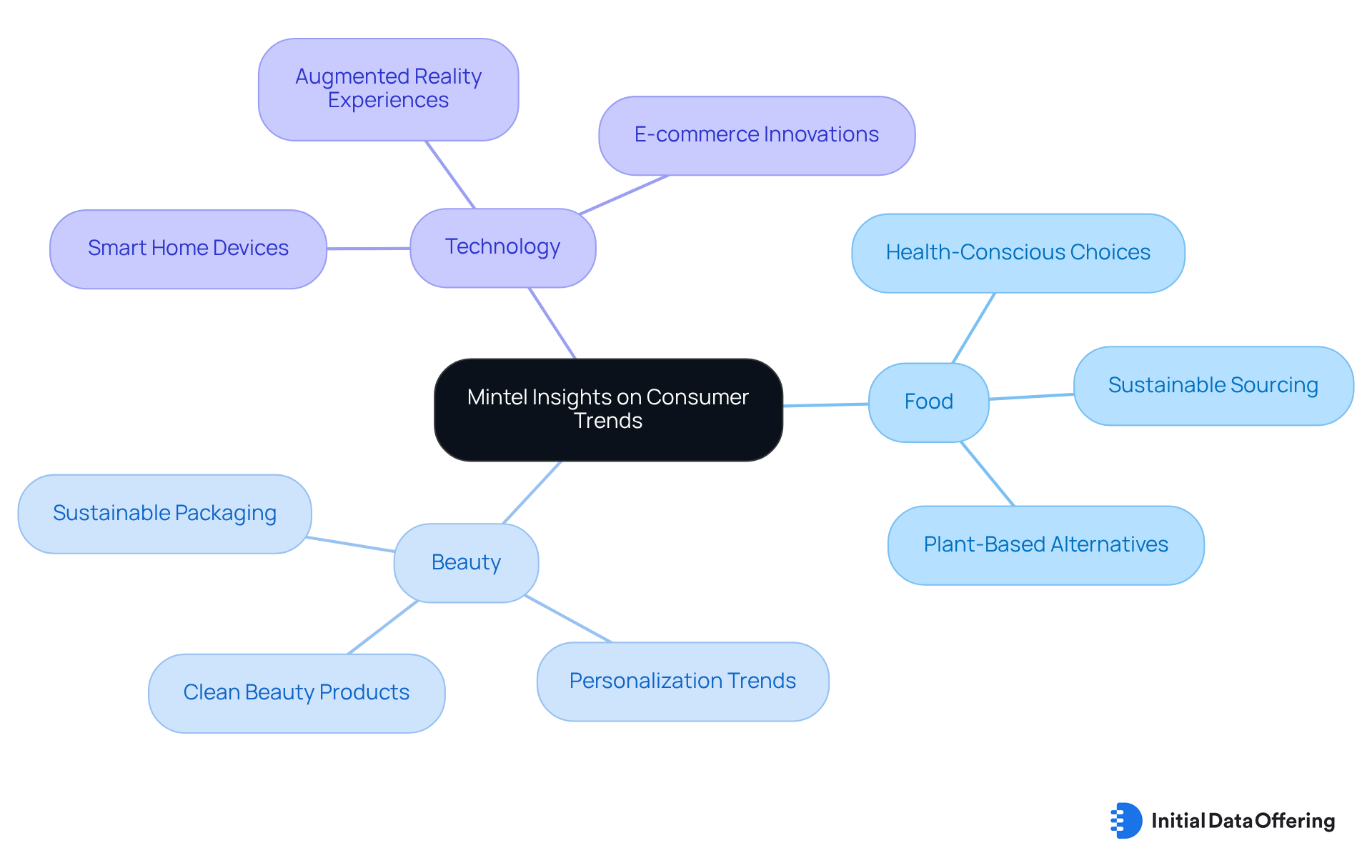
Conclusion
Accessing diverse datasets and competitive data is crucial for organizations aiming to enhance their market insights and strategic decision-making. The article highlights various sources, each offering unique insights that empower businesses to navigate an increasingly complex market landscape. By leveraging platforms like IDO, TikTok Consumer Sentiment Data, MarketPsych, and others, companies can gain a competitive edge through informed analysis and targeted strategies.
Key arguments presented include:
- The significance of understanding consumer sentiment through social media
- The importance of corporate responsibility via ESG data
- The value of comprehensive statistics from platforms like Statista and Nielsen
Each resource provides critical insights that help organizations identify trends, assess market dynamics, and refine their approaches to meet evolving consumer needs.
In conclusion, the ability to harness competitive data is not just a strategic advantage but a necessity in today’s fast-paced market environment. Organizations are encouraged to actively explore these resources, integrate insights into their strategic planning, and remain agile in adapting to changing consumer behaviors and market trends. By doing so, they can position themselves for success and drive innovation in their respective sectors.
Frequently Asked Questions
What is the Initial Data Offering (IDO)?
The Initial Data Offering (IDO) is a centralized platform for discovering and launching new datasets, focusing on quality and uniqueness across various sectors such as finance, social media, and environmental studies.
How does IDO benefit enterprises and researchers?
IDO empowers enterprises and researchers by providing access to curated, high-quality datasets that facilitate informed decision-making and foster innovation.
What is the projected growth of the large-scale analytics market?
The global large-scale analytics market is projected to grow from $307.52 billion in 2023 to $924.39 billion by 2032.
Why is access to high-quality competitive data important for organizations?
Access to high-quality competitive data is essential for effective decision-making and gaining strategic advantages in a competitive market.
How can organizations utilize IDO for their strategic initiatives?
Organizations can harness IDO by utilizing its unique datasets to gain insights that inform their operations and enhance their competitive edge.
What insights does TikTok Consumer Sentiment Data provide?
TikTok Consumer Sentiment Data offers insights into user perceptions of brands and products, helping companies identify emerging trends and customize their marketing strategies.
How can sentiment analysis on TikTok impact brand engagement?
Sentiment analysis can reveal emotional responses to campaigns, allowing brands to refine their messaging and improve engagement with their target audience.
What results have companies achieved by using sentiment analysis on TikTok?
Companies like Samsung have seen a 35% increase in brand favorability and a 15% increase in purchase intent by effectively utilizing sentiment analysis.
Why is monitoring sentiment trends on TikTok important for brands?
Regularly monitoring sentiment trends helps brands adapt their strategies to remain relevant in the fast-changing landscape of consumer preferences on TikTok.
What does MarketPsych Sentiment Analytics analyze?
MarketPsych Sentiment Analytics examines emotions within the financial landscape by analyzing news, social media, and various data sources to assess public sentiment towards brands and competitors.
How can companies benefit from using MarketPsych Sentiment Analytics?
Companies can use MarketPsych to track sentiment trends, anticipate industry changes, and adjust their strategies to enhance their competitive advantage.
What is the significance of understanding public sentiment for businesses?
Understanding public sentiment is crucial for businesses as it can serve as a differentiator in a rapidly evolving environment, allowing them to learn from customer feedback and improve their strategies.